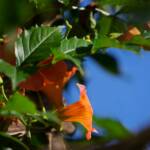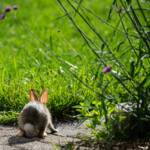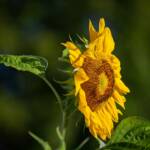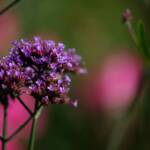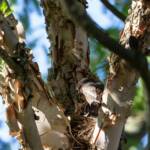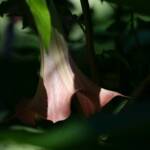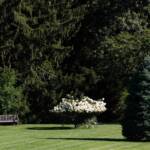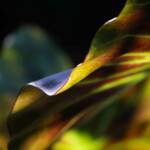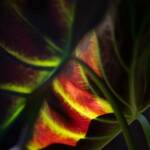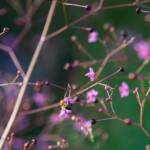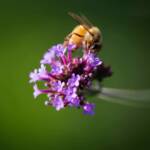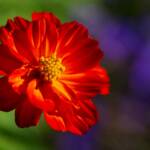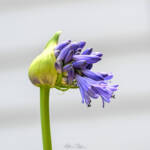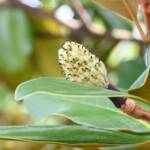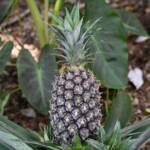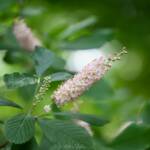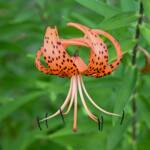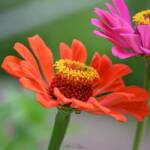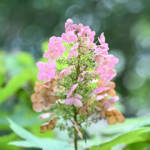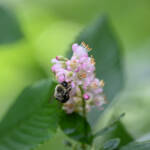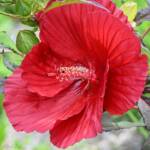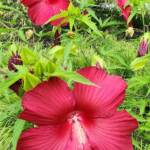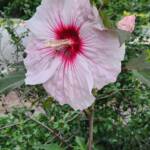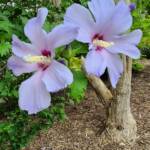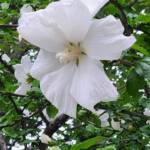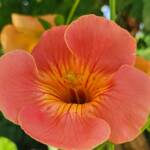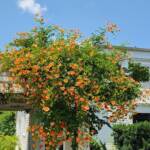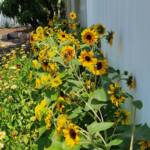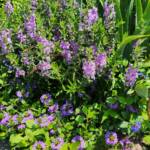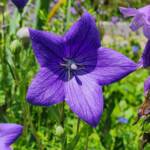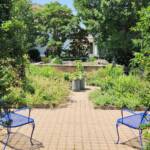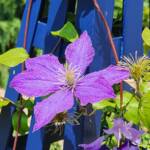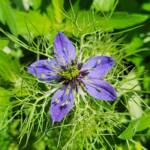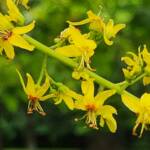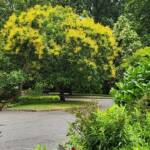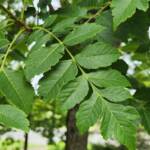For testing various lcp entries.
Sunday Saunter – 7/30/23
Thanks to frequent contributor, Steve Kanan, for another batch of lovely pictures. He said he enjoyed normal weather so much that he followed up his morning visit with another in the afternoon.
Don’t miss out on summer at the Frelinghuysen — visit the gardens soon.
Photo Highlights from Katharine Boyle
Katharine Boyle visited the Arboretum yesterday and sent this batch of beautiful pictures along with the following note:
…it’s been a while. And to my utter surprise, I spotted a pineapple there! It must have been “welcoming” me back.
Thanks, Katharine, for the lovely images.
Hibiscus Flowers at the Arboretum
There are many varieties of Hibiscus plants; two that are currently in bloom at the Arboretum are Hibiscus moscheutus and Hibiscus syriacus.
Hibiscus moscheutus (Swamp Rose Mallow) is a herbaceous perennial that produces dinner plate sized flowers. The plants can reach 3-7 feet tall by 2-4 feet wide. New growth is slow to emerge in spring, but grows quickly thereafter. Hibiscus moscheutus cv. Kopper King is a pretty shade of pink with a dark pink throat. A bright red Hibiscus moscheutus (possibly ‘Lord Baltimore’) is blooming nearby.
Hibiscus syriacus (Rose of Sharon) is a close relative of H. moscheutus. A native of eastern Asia, it is a vigorous, upright, vase-shaped, multi-stemmed, deciduous shrub which grows to 8-12 feet tall. Currently in bloom at the Arboretum are a white flowered plant, Hibiscus syriacus cv. Diana and the blue flowered H. syriacus ‘Blue Bird’.
Several other varieties are also in bloom, why not visit and check them out for yourself?
Picture credits: Margery Ennist.
HOT FLOWERS IN THE ARBORETUM’S GARDENS
Shades of red, orange and yellow are considered “hot” colors; in the garden, they serve to brighten up a spot, highlight an area and/or provide a focal point to lure you in for a closer look.
The arbor at The Frelinghuysen Arboretum holds a large Trumpet Vine (Campsis radicans), covered at this time of the year with big orange flowers. The Trumpet Vine is a vigorous, deciduous woody vine growing to about 33 feet long, with shiny, dark green, pinnately compound leaves. The flowers are each about 3.5 inches long, trumpet shaped and lacking in scent. After flowering, a six inch long seed capsule forms, dries and splits releasing hundreds of thin, brown, paper-like seeds. It is native to the Eastern United States..
Another name for the plant is Hummingbird Vine because the flowers attract these tiny, jewel-like summer visitors. The vine also attracts a variety of other creatures: Birds nest in the vine and moths, bees, flies and ants feed on the nectar.
A variety of vegetables and fruits are grown in the Barkman Vegetable Garden and this year there is a large bed of Sunflowers (Helianthus) growing against the fence, providing a nice, bright sunny yellow show. Sunflowers are native to the Americas and are said to symbolize long life and lasting happiness.
An interesting fact about Sunflowers is that they track the sun (heliotropism). At night, Sunflowers face east, anticipating the sun’s return and track its progress throughout the day. They do this until they get old and stop moving.
The gardens at The Frelinghuysen Arboretum hold a large variety of hot blooming plants, visit soon and discover them for yourself!
Picture credits: Margery Ennist.
THE BLUE GARDEN AT THE ARBORETUM
Blue in the garden can create a cooling, soothing, restful atmosphere. This can be achieved by using flowers, foliage, garden ornaments, etc., in all shades and hues of blue. The Blue Garden in front of Matilda’s Cottage contains all sorts of blue flowered plants, from annuals such as Fan Flower (Scaevola) to perennials such as Balloon Flower (Platycodon grandiflorus) and the airy, delicate flowers of Love-in-a-Mist (Nigella damascena). Blue metal benches and a tall blue tuteur providing a climbing structure for a Clematis vine, complete this garden.
Visit this lovely garden room soon, sit on one of the blue benches and watch the bees and butterflies as they hover around the many flowers in the garden.
Picture credits: Margery Ennist.
At the Arboretum July 5, 2023
Today we’re featuring the lovely Koelreuteria paniculata ‘Rose Lantern’. This is a dense, rounded, deciduous tree which grows to a height of between 30 and 40 feet with an equal or greater spread. It has pinnate leaves that emerge reddish in the spring, mature to a bright green and turn yellow in the fall. Airy panicles of delicate golden yellow flowers bloom in summer followed by dramatic, rose-pink, bladder-like fruits in the fall.
Known as the Golden Rain Tree, the Arboretum’s specimen can be seen on the left at the end of the first parking bay as you come up the driveway from Hanover Avenue. Make a point of visiting it soon and come back to see the bladder-like fruits in the fall!
Photo credits: Margery Ennist.
